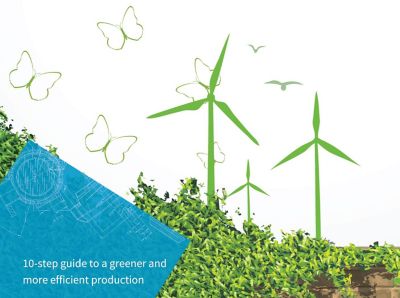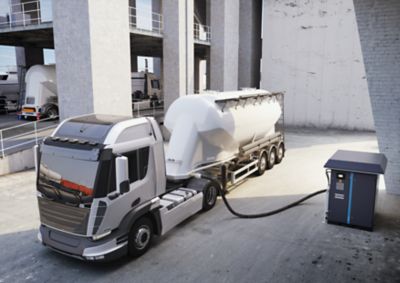May 16, 2025
In this article, we take a closer look at how beer filtration supports clarity, stability, and scalability in brewing. This article includes information on what filtration removes, how different techniques compare, and how the right approach can help your brewery scale production without compromising on quality.
Introduction: The role of beer filtration in brewing
Beer filtration is a critical step in brewing, ensuring clarity, stability, and flavor consistency. By removing suspended solids, haze-forming compounds, and microorganisms, filtration enhances the beer's visual appeal and shelf life. Filtration can take place at different points in the brewing process, depending on the type of beer you want to brew and the desired result. Whether you're producing crisp lagers or cloudy ales, the right beer filtration techniques help maintain quality and consistency, especially important as production scales up.
Why beer filtration matters
Beer filtration serves several aspects:
- Visual impression:
A glossy beer is more visually appealing to many customers than an unfiltered beer, which gives the impression of a product with a defect due to its cloudiness. With many beers, such as a clear pilsner or lager beer, consumers expect a clear drink without visible particles or cloudiness.
- Taste and aroma:
Correctly carried out filtration also has a positive influence on the taste and aroma of a beer. If, for example, the yeast is not removed, it begins to decompose itself, which creates an undesirable aftertaste (autolysis taste). Filtering out proteins and phenols prevents astringency and thus creates a softer taste experience.
- Shelf life:
In addition, the filtration process contributes to enhancing the shelf life of the beer as unwanted and insoluble solids would reduce it. Well-filtered beer is far less likely to pick up off-flavors or spoil during storage, helping it stay fresh longer.
- Stability:
Filtration can contribute to the overall stability of your beer and prevent unwanted changes in taste, aroma, or appearance over time. By eliminating potential sources of turbidity or sedimentation, filtration can help maintain the clarity and visual appeal of your beer. In addition, removing certain compounds or microorganisms can prevent the development of off-flavors or spoilage during storage and ensure that your beer remains consistent and enjoyable throughout its shelf life. Membrane filtration methods, in particular, are effective in maintaining long-term product stability without impacting taste.
Key impurities removed during beer filtration
Beer filtration targets various ingredients in beer, such as:
- Yeast cells: Yeast is essential for the fermentation process, but can also be responsible for foreign aromas or cloudiness in the beer. If it is not wheat beer, where the yeast is (sometimes) desired, the yeast should be removed.
- Proteins and polyphenols: To prevent subsequent cloudiness in beer, tannins (e.g. polyphenols) should be removed. In beers with a long shelf life, polyvinylpolypyrrolidone (PVPP) is added for this purpose, which binds polyphenols and is then filtered out. On the protein side, the addition of bentonite has a similar effect.
- Microorganisms: Microorganisms can spoil a beer or at least negatively affect the taste. The filtration of microorganisms is usually the final filtration step.
- Other insoluble components: The filtration of beer also removes larger, insoluble components such as hop components or filter aids such as silica grain.
Beer filtration techniques
Beer filtration usually takes place between the storage tanks and the bottling plant. In a first step, the matured beer is freed from a large part of the yeast and other coarse turbidity in a separator at 2°C – 4°C. This optional step reduces the operating costs for the subsequent primary clarification, in which the remaining yeast and turbidity are filtered out.
Depth filtration using Kieselguhr
At this stage, Kieselguhr (Diatomaceous earth, also known as diatomite celite, or kieselguhr) is commonly used as a filter aid. This is washed up together with water and helps the filter cake to remain permeable and stable at the same time. Think of this step as the groundwork - it clears out the larger particles and builds the base for a polished final product.
Stabilization with PVPP, bentonites, or silica gel
Once the beer is clarified, the next step is stabilization, i.e., it prevents cloudiness in the bottle. For beers with a shelf life of up to 12 months, this is achieved by adding PVPP, bentonites or silica gel preparations. These compounds quietly do their job, binding to haze-forming particles, before being filtered out in the next step.
Fine filtration for polish and clarity
Following stabilization, the beer undergoes fine filtration. This step removes any remaining turbidity, traces of filter aid and, in some cases, larger microorganisms. This ensures the beer meets a gloss fineness of less than 0.5 EBC so the beer not only looks brilliant but is ready to stand up to packaging and distribution without compromise.
Membrane filtration for sterile beer
For the subsequent disinfection, there are several options available: In addition to "cold sterilization" (membrane filtration), there is also flash pasteurization and pasteurization. Among these, membrane filtration offers the gentlest approach in terms of sensory impact. Pasteurization, on the other hand, tends to introduce oxygen and can accelerate aging, often requiring additional stabilization afterward.
Crossflow filtration in larger breweries
In addition to the beer filtration techniques mentioned above, many large-scale breweries have adopted crossflow filtration as part of their process. In this process, the yeast and coarse impurities are separated by means of hollow fiber membranes. In contrast to normal candle or layer filtration, in which the beer meets the filtering matrix at a 90° angle ("dead end filtration"), here the beer to be cleaned is guided parallel to the hollow fiber membrane ("tangential filtration"). The yeasts and other unwanted components are separated at the hollow fiber membrane, and only the filtered beer ("permeate") is further processed.
Choosing the right beer filtration technique
Which beer filtration technology is ultimately used naturally depends on many factors:
- Beer type and desired clarity: Different beer styles have varying clarity requirements. For example, lagers typically require higher clarity compared to some ales and wheat beers, which may be intentionally hazy
- Production scale and efficiency: The size of the brewery and the volume of beer produced influence the choice of filtration system. Larger breweries may opt for more automated and efficient systems like cross-flow filtration
- Cost and maintenance: The cost of the filtration system and its maintenance requirements are also crucial. Some systems, like diatomaceous earth filters, may have lower initial costs but higher maintenance
Scaling beer production with smart filtration
Atlas Copco solutions for breweries
In addition to the right compressed air filters for wort aeration or steam filters for barrel sanitation, Atlas Copco offers the right equipment for all steps of the filtration process. Whether it’s filter elements for PVPP recovery, sheets for fine filtration, or membrane filters for final disinfection, our team brings both technology and hands-on experience to support your brewing goals.
Filtration plays a critical role not just in enhancing beer clarity and stability but also in supporting brewery growth.
The right filtration techniques and reliable brewery equipment ensure that quality is never compromised, even as production scales. For personalized solutions tailored to your brewery's needs, contact our experts.


